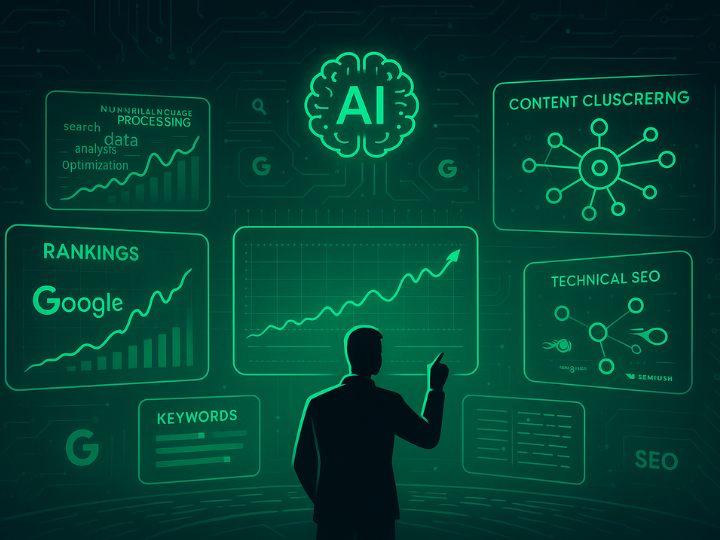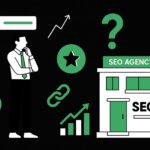Imagine launching a campaign that knows when to speak, how to speak, and whom to target, without needing daily tweaks. That’s the power of AI-powered marketing. Gone are the days of guesswork and generic messages. Today’s landscape belongs to brands that think faster, act smarter, and adapt in real-time. For any business wanting to thrive in a data-driven economy, harnessing AI isn’t optional, it’s mission-critical.
As more brands fight for attention online, sticking to fixed schedules and manual updates doesn’t work anymore. AI marketing stands out because it quickly understands huge amounts of data. It spots changes in what people want, reacts to trends as they happen, and updates ads in real time. This speed helps you save time and money while making sure your message reaches the right people at the right moment.
Why AI is Now Mission-Critical
With global digital ad spend expected to top $740 billion by 2025, the pressure to get marketing right has never been greater. Traditional methods like demographic targeting, scheduled campaigns, and static ads are simply too slow for today’s audience. People expect tailored, timely experiences. AI-powered marketing allows you to deliver just that.
In my opinion, brands that are still hesitant about AI aren’t being cautious but they’re falling behind.
The AI-Powered Marketing Advantage: What’s Actually Changing?
Let’s break it down. AI-powered marketing isn’t about taking jobs away. It’s about making marketing teams more effective by doing the heavy lifting processing data, testing variations, and optimising in real time.
Here’s how the two approaches stack up:
| Traditional Marketing | AI-Powered Marketing |
| Based on past behaviour | Predictive and adaptive in real-time |
| Static audience segmentation | Dynamic behavioural profiling |
| Manual A/B testing | Automated multivariate testing |
| Delayed campaign updates | Instant optimisation |
| Generic messaging | Hyper-personalised content delivery |
With AI, you’re no longer making broad assumptions. You’re making informed, real-time decisions that speak directly to your audience.
How AI Supercharges Paid Media Campaigns?
Here’s where it gets exciting. AI-powered marketing isn’t just a tool but it’s a transformation engine. Below are just a few real-world ways I’ve seen it drive tangible results.
1. Behaviour-Based Targeting
Instead of targeting by age or location, AI tracks real-time user actions like scrolling, clicking, or abandoning carts. These are then clustered into micro-segments, allowing marketers to send hyper-relevant messages.
Client Insight: One skincare brand I consulted cut their ad spend by 35% by replacing static interest-based targeting with AI-powered behavioural triggers. Conversion rates went up. Wasted impressions went down.
2. Dynamic Creative Optimisation (DCO)
Rather than manually testing different ad copies, AI-powered marketing continuously rotates and optimizes text, images, and layouts based on live performance data. No more waiting weeks to A/B test a headline.
Visual Concept: Think of CTR graphs pre- and post-AI. The spike is immediate and sustained. AI ensures your best version is always live without a creative bottleneck.
3. Predictive Budget Allocation
Why throw money blindly? AI analyses past campaign data, predicts ROI for different channels, and shifts budgets accordingly. It’s a constantly self-adjusting machine.
| Platform | Manual Spend | AI-Optimised Spend | ROI Increase |
| Facebook Ads | $5,000 | $3,200 | 0.28 |
| Google Search | $3,000 | $5,000 | 0.41 |
| Display Ads | $2,000 | $1,800 | 0.09 |
These aren’t hypothetical figures. I’ve seen these shifts take underperforming accounts and turn them into top performers in under a quarter.
Emotional Intelligence at Scale
Here’s something most people overlook: AI is learning to understand emotions.
Using sentiment analysis, AI tools scan through comments, messages, and even tone in reviews to detect mood like frustration, happiness, uncertainty. This lets you adjust messaging based on emotional feedback, not just click rates.
For example: If a customer feels disappointed and leaves a comment, the AI might trigger a more empathetic tone in the next touchpoint. It’s subtle, but powerful.
Before AI, we needed focus groups to gain this kind of insight. Now? It’s automatic.
Conversational AI: Chatbots and Voice Search
Voice is the next big thing and AI is powering it.
Through Natural Language Processing (NLP), AI can understand how real people speak, type, and ask questions. This makes voice search and chatbots not just responsive, but conversational.
What’s working well now: Setting up AI-powered chatbots that guide customers through entire buying journeys from product questions to checkout. The experience feels personal and conversion rates often jump by 15–20%.
Common Challenges AI Solves
Still wondering whether AI’s worth it? Let’s look at the typical pain points it helps solve.
| Challenge | AI-Driven Solution |
| Ad fatigue | Rotates creatives automatically to reduce boredom and boost engagement |
| Budget wastage | Predicts performance and reallocates spend in real-time |
| Inconsistent ROI | Learns from past winners and losers to refine campaign approach |
| Slow experimentation | Runs dozens of multivariate tests at once |
| Personalisation limits | Generates and scales custom content for millions instantly |
AI handles the grunt work so your team can focus on what humans do best with creative strategy and brand storytelling.
Is AI Going Too Far?
Here’s the honest bit: Yes, AI can go too far. There’s a fine line between helpful and intrusive.
How much personalisation is too much? What if customers feel “watched”? These are valid concerns. That’s why transparency is critical. Let users know why you’re collecting their data and what you’re doing with it.
In my experience, customers are okay with personalized content as long as they understand the value exchange. Trust builds loyalty. Ethical AI isn’t just a nice-to-have but it’s a competitive differentiator.
What Lies Ahead?
Some still see AI-powered marketing as something for “big brands” or “later down the line.” That’s the wrong approach. It’s already here and it’s reshaping the field.
Expect improvements in:
- Emotion detection through advanced sentiment models
- Conversational interfaces for websites and apps
- Hyper-granular targeting using privacy-compliant data
Final Thought
Let’s be real, AI isn’t perfect as it doesn’t replace creativity, nor does it fix a bad product or weak strategy. But it does make everything faster, smarter, and more targeted.
In my opinion, AI-powered marketing isn’t the future, but it’s the present. The brands that embrace it early will lead. The ones that wait? They’ll play catch-up. So, is it time for your brand to get smarter? Because if you’re still marketing like it’s 2015, AI is the partner you didn’t know you needed.
Contact Sierra Exclusive today and to see the power of AI in your marketing.




